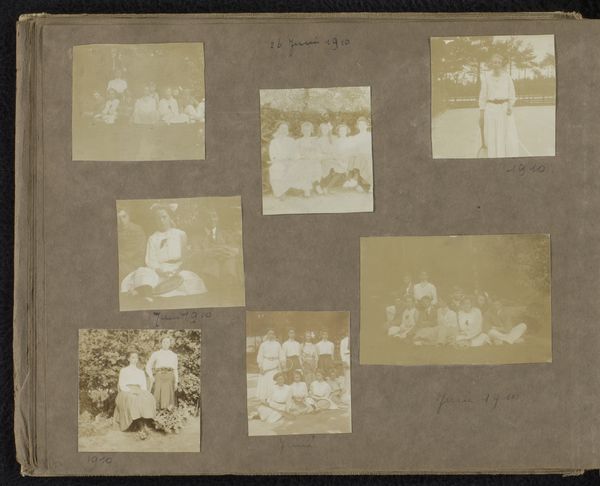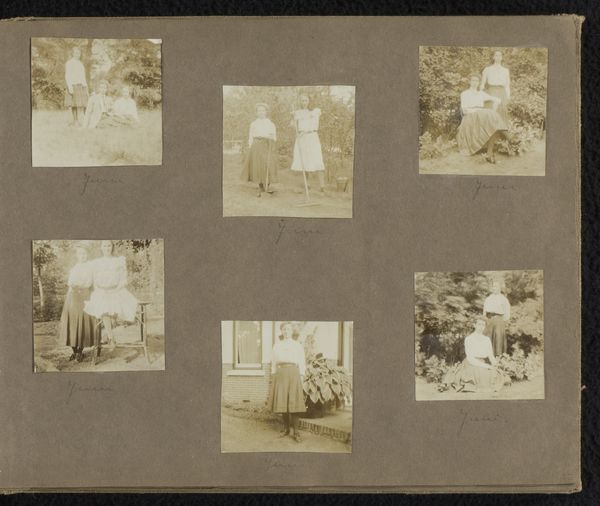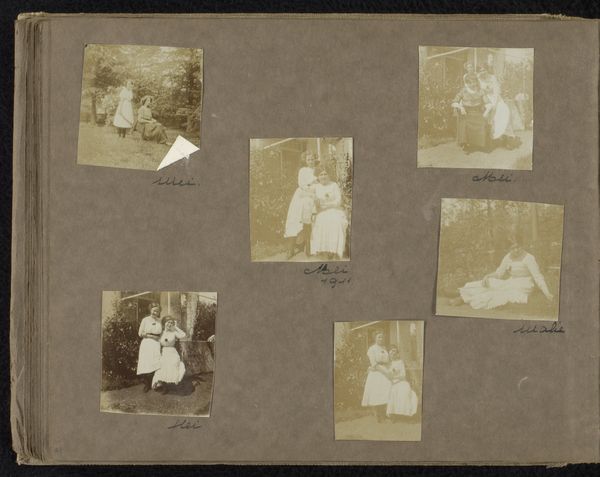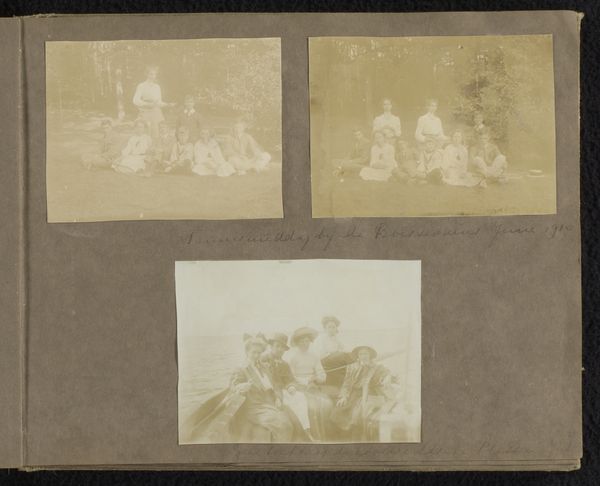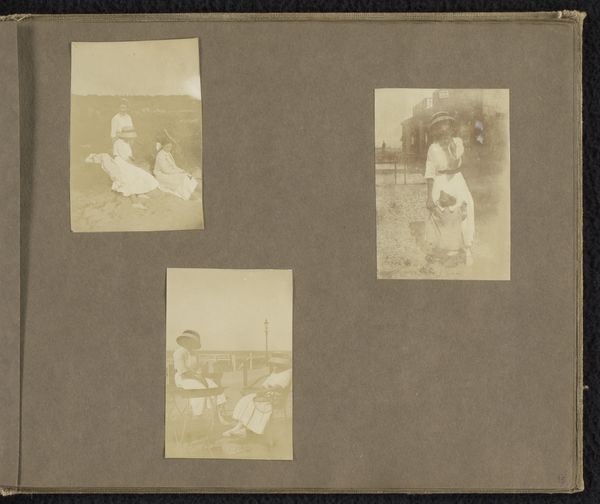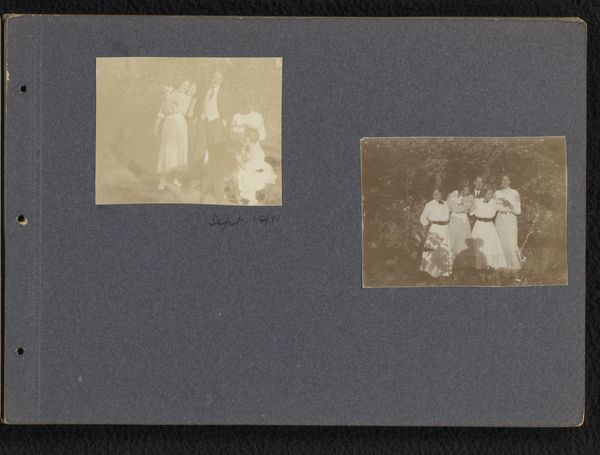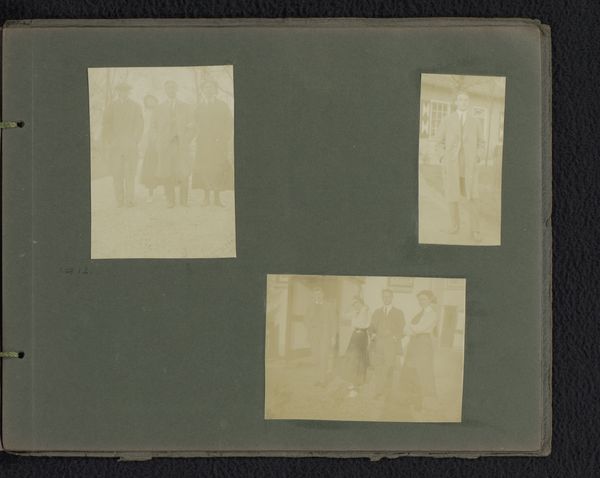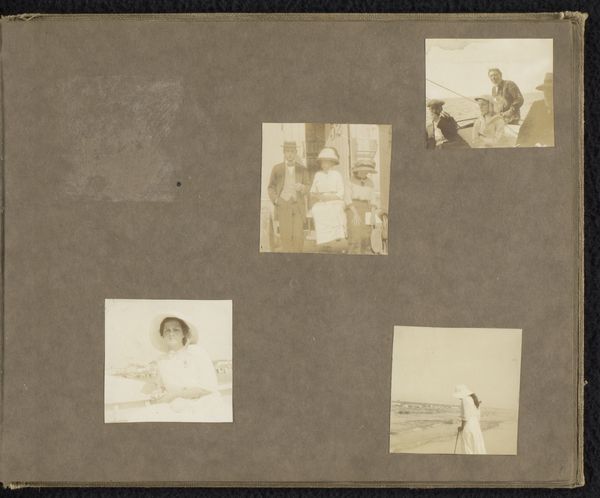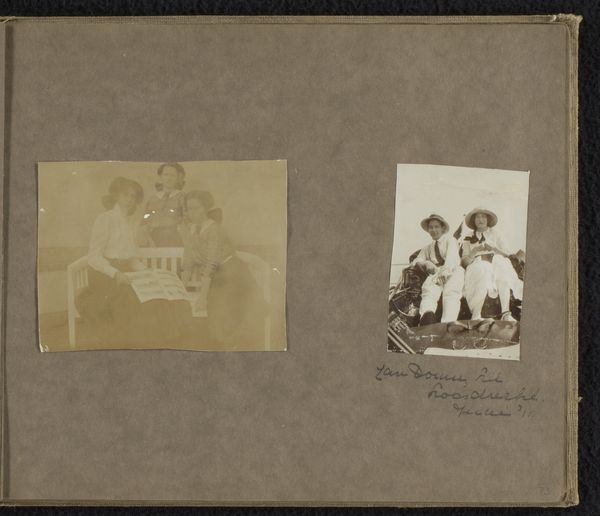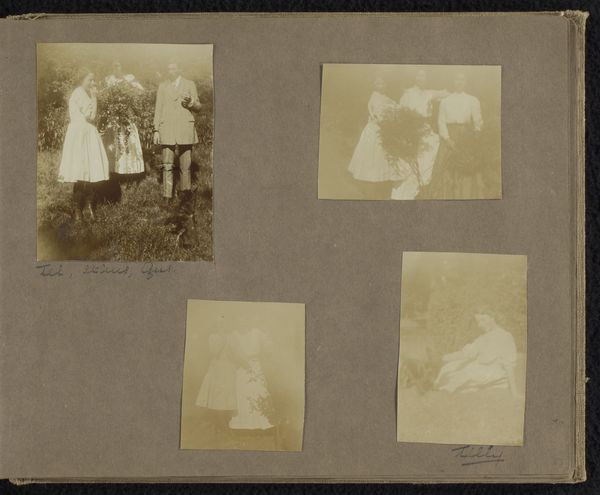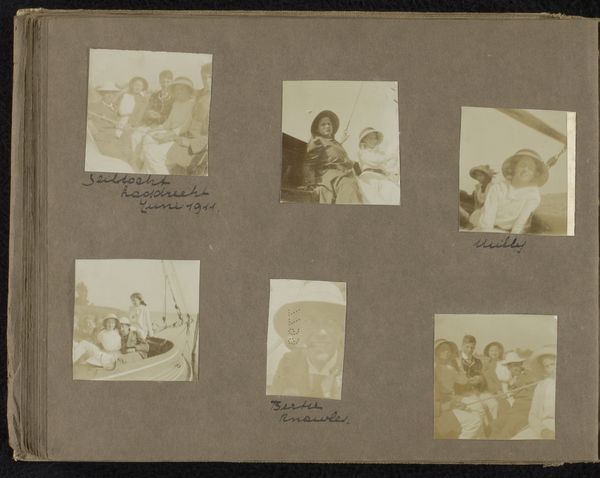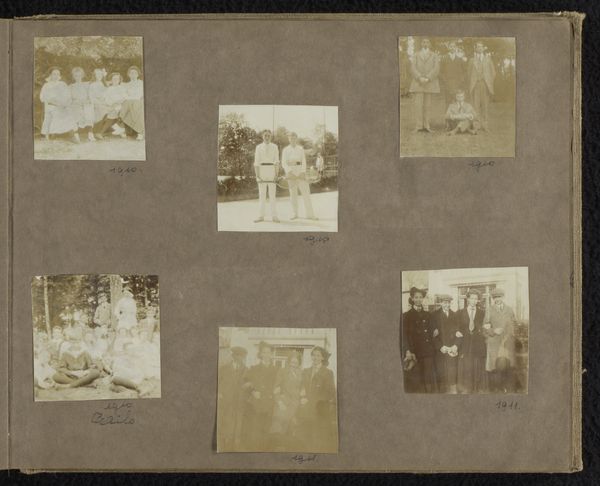
Vijf foto's van Loentje en Willy Onnen met Winny Uhlenbeck en andere vrienden, met tennisrackets 1910 - 1916
0:00
0:00
photography, albumen-print
#
portrait
#
pictorialism
#
photography
#
group-portraits
#
genre-painting
#
modernism
#
albumen-print
Dimensions: height 203 mm, width 253 mm
Copyright: Rijks Museum: Open Domain
Curator: These gelatin silver prints are collectively titled "Vijf foto's van Loentje en Willy Onnen met Winny Uhlenbeck en andere vrienden, met tennisrackets." Taken sometime between 1910 and 1916, the photographs give us a glimpse into the social lives of Carolina (Loentje) Frederika Onnen and her circle. Editor: My immediate thought is the overwhelming whiteness. Not just the photographic processing which gives it an ethereal quality, but in terms of who is represented and centered in the composition. I feel a definite echo of privilege. Curator: Precisely. These images are deeply embedded in a very specific socio-economic context. Leisure time and access to sports like tennis were indicators of a certain class position, particularly for women. Loentje Onnen, as the daughter of a prominent lawyer, would have occupied such a position. We see here, in these seemingly casual snapshots, a construction of identity interwoven with class and gender. Editor: Considering the materials further, the choice of albumen prints itself suggests a degree of meticulousness and expense. The labor involved in producing such prints—coating, sensitizing, printing, toning—highlights the deliberate craftsmanship involved in what might appear as candid moments. The social act of taking these pictures and assembling them also underscores the means and networks necessary for engaging in amateur photography at this time. Curator: The very act of documenting these women engaging in leisurely activities serves to legitimize and celebrate their social standing, upholding normative femininity. Think about the absence of other voices, the potential for exclusion based on race, sexuality, or social standing. The album as a technology, serves almost like a curated exhibit of societal norms. Editor: Yes. When we talk about pictorialism we often emphasize the artistic skill involved in producing these images. It's interesting to consider the material resources and the specific historical conditions which made their construction possible in the first place. Curator: By acknowledging these images not as innocent glimpses into the past, but rather as products deeply implicated in broader societal structures, we can then view this through a far more intersectional lens. This enables critical engagement of social agency and structural constrictions inherent in visual practices. Editor: Thinking about the role of photography today, what it makes possible and what it hides, perhaps not a whole lot has changed about the political economy of capturing an image and sharing it with an audience. Curator: It invites a new reading and a chance to resist traditional art history, hopefully pushing it to becoming a critical practice that empowers a much wider range of people.
Comments
No comments
Be the first to comment and join the conversation on the ultimate creative platform.
